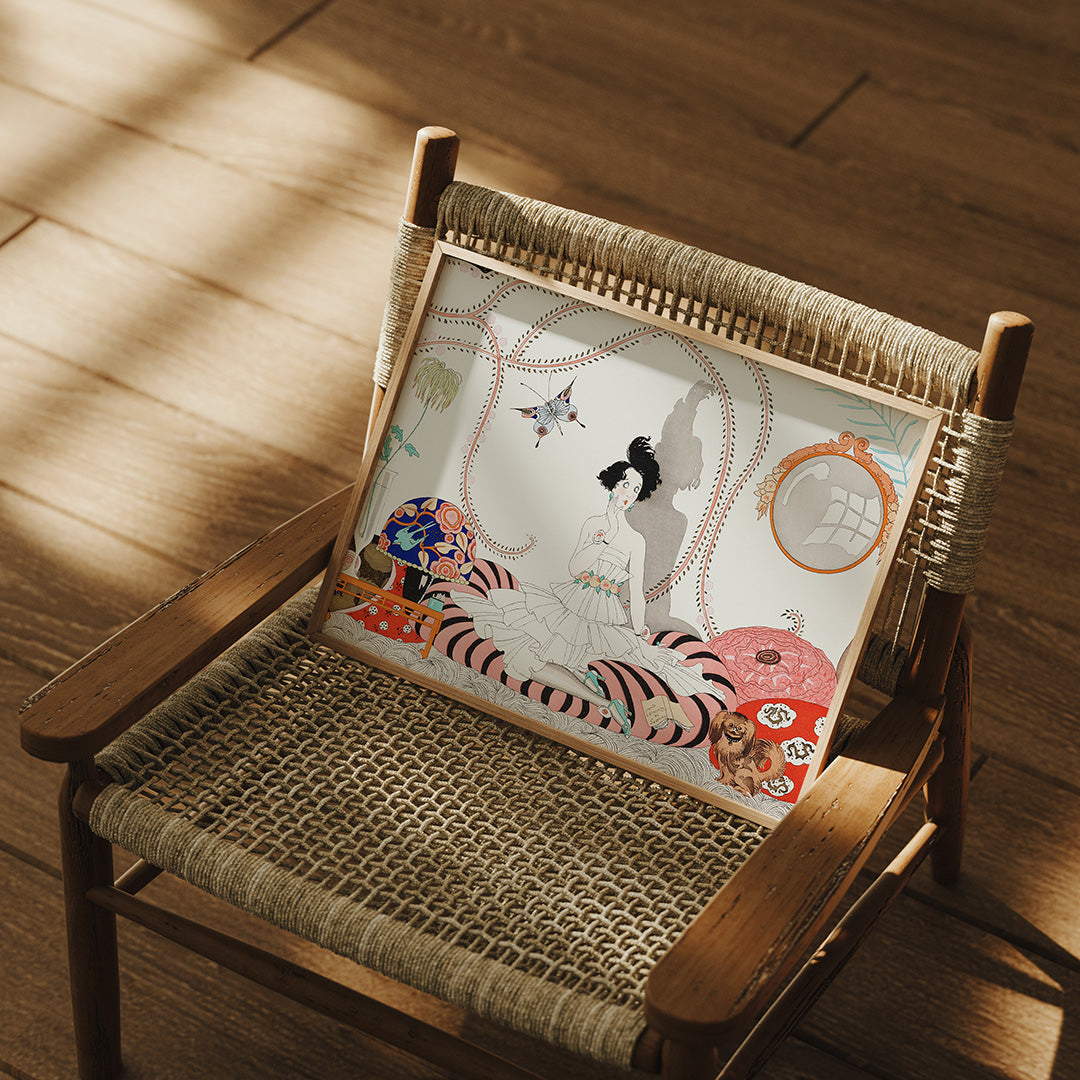A celebration of quiet opulence, refined lines, and timeless femininity.
There are moments in art history when elegance feels almost suspended in time—delicate, unbothered, and so precise that it becomes otherworldly. Minhuit (1920) by George Barbier is one of those moments.
A leading figure of the Art Deco movement, Barbier was known for his fashion illustrations, theatre designs, and book art, but it’s in works like Minhuit that we see his genius truly stretch — where fine art and visual storytelling become inseparable.
A Portrait of Leisure and Luxury
The scene in Minhuit is a quiet, stylized portrait of a woman at midnight. But there’s nothing sleepy about it. She sits delicately atop a lush, striped divan surrounded by ornate cushions, a loyal lapdog, and hints of soft light reflecting off a gilded mirror.
Barbier renders her world with a precision that feels intimate yet untouchable. The patterns, the posture, the decor — everything suggests a world where beauty is curated and time slows down for it.
This isn’t just a woman at rest. It’s a woman who owns her stillness.
Why We Chose Minhuit
We’re always drawn to pieces that quietly command attention — and Minhuit does just that. It’s a masterclass in Art Deco minimalism, even in its indulgence. The muted palette, the balance of composition, and the fluidity of the lines make it a deeply harmonious work that translates beautifully into a fine art print.
When we imagined it living in someone’s home, we saw it anchoring spaces with calm presence — in bedrooms, reading corners, and salons filled with natural light. It invites contemplation and stillness, while still whispering luxury.
A Quiet Statement for Your Walls
This print is more than a decorative object — it’s an entry into a different tempo. One where grace is slow, detail is everything, and femininity is rendered with full intention.
As part of our curated fine art print collection, Minhuit (1920) brings a touch of timeless indulgence into contemporary interiors. Whether you're a longtime lover of Barbier or discovering his work for the first time, this piece is an invitation: to soften, to elevate, and to live a little more artfully.













